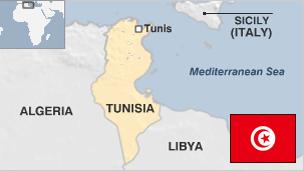Arab uprising: Country by country - Tunisia
- Published
What happened?

The downfall of Tunisia's President Zine al-Abidine Ben Ali inspired pro-democracy activists across the Arab world.
Widespread discontent at economic hardship, decades of autocratic rule and corruption erupted into mass demonstrations in December 2010 after a young, unemployed man, Mohamed Bouazizi, set fire to himself after officials stopped him selling vegetables in Sidi Bouzid. Around 300 people were killed during the subsequent unrest, which forced Ben Ali to resign in January 2011, after 23 years in power, and go into exile in Saudi Arabia. He was later sentenced to life in prison in absentia.
In October 2011, Tunisia held its first democratic parliamentary elections. The moderate Islamist Ennahda party won more than 41% of the vote in the constituent assembly tasked with drafting a new constitution. Veteran dissident Moncef Marzouki was then elected president.
Where are we now?
Since July 2013 a stand-off between Ennahda and its secular rivals, triggered by the assassination of two leftist politicians and other violence blamed on Salafists, has thwarted efforts to complete the draft constitution. Opposition supporters took to the streets to demand a non-partisan caretaker government until the constitution was finished and new elections were held, and in December 2013 the main political parties agreed on appointing Mehdi Jomaa as prime minister.